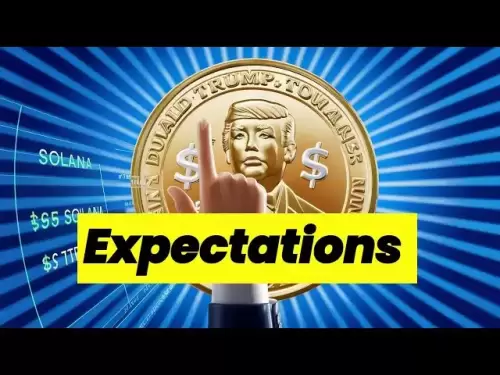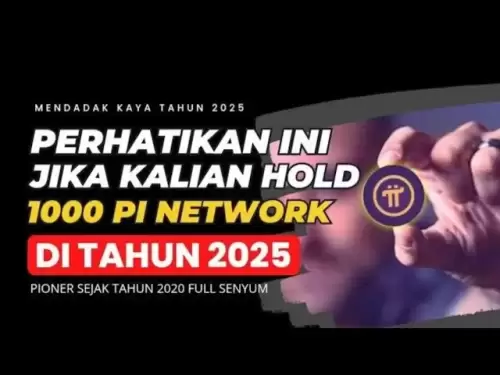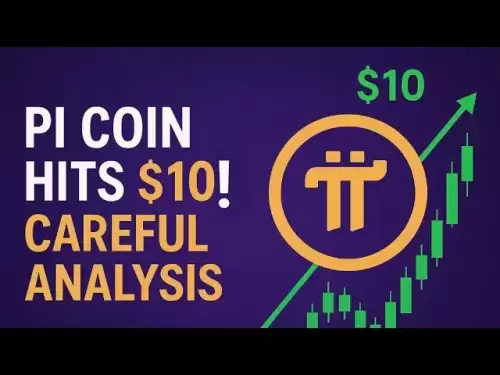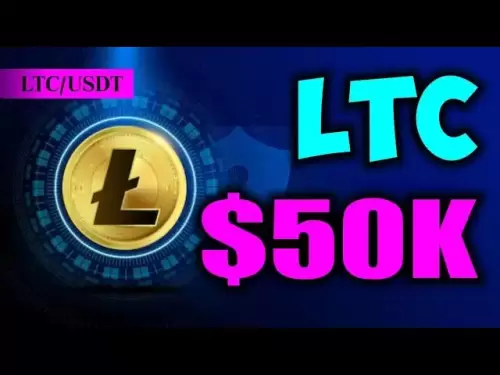-
 Bitcoin
Bitcoin $118200
0.13% -
 Ethereum
Ethereum $3747
4.69% -
 XRP
XRP $3.515
2.31% -
 Tether USDt
Tether USDt $1.000
-0.02% -
 BNB
BNB $753.8
2.58% -
 Solana
Solana $181.7
2.19% -
 USDC
USDC $0.9997
-0.01% -
 Dogecoin
Dogecoin $0.2714
12.11% -
 Cardano
Cardano $0.8700
4.49% -
 TRON
TRON $0.3170
-1.09% -
 Hyperliquid
Hyperliquid $46.67
3.75% -
 Stellar
Stellar $0.4732
1.93% -
 Sui
Sui $3.937
2.55% -
 Chainlink
Chainlink $19.49
5.52% -
 Hedera
Hedera $0.2777
3.08% -
 Bitcoin Cash
Bitcoin Cash $547.4
5.82% -
 Avalanche
Avalanche $25.23
1.29% -
 Shiba Inu
Shiba Inu $0.00001562
4.48% -
 Litecoin
Litecoin $117.1
4.09% -
 UNUS SED LEO
UNUS SED LEO $8.991
0.15% -
 Toncoin
Toncoin $3.293
2.21% -
 Polkadot
Polkadot $4.517
1.96% -
 Uniswap
Uniswap $10.65
5.08% -
 Ethena USDe
Ethena USDe $1.001
0.00% -
 Monero
Monero $325.1
1.49% -
 Pepe
Pepe $0.00001425
6.78% -
 Bitget Token
Bitget Token $4.962
1.38% -
 Dai
Dai $0.9999
-0.01% -
 Aave
Aave $326.9
3.03% -
 Bittensor
Bittensor $425.7
2.24%
What is an ERC721 contract?
The ERC721 standard enables unique, indivisible NFTs on Ethereum, supporting digital art, gaming items, and more through secure smart contracts.
Jul 19, 2025 at 03:57 pm
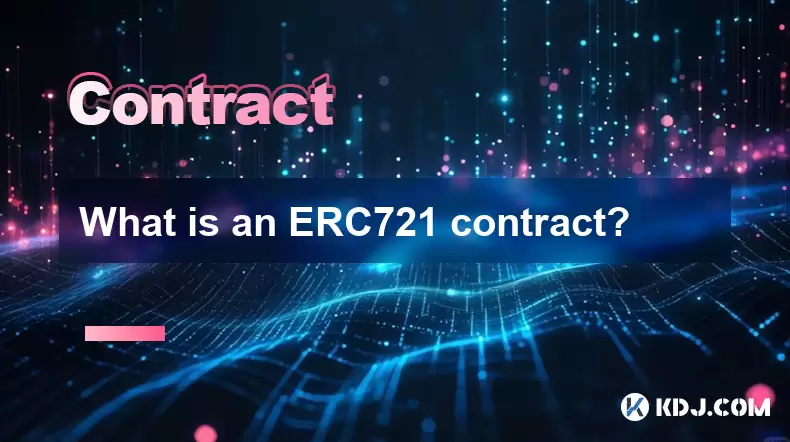
Understanding the Basics of ERC721
The ERC721 standard is a crucial protocol within the Ethereum blockchain that enables the creation of non-fungible tokens (NFTs). Unlike fungible tokens such as ERC20, which are interchangeable and hold uniform value, ERC721 tokens are unique and indivisible. This distinct property allows each token to represent ownership of a specific digital or physical asset, such as artwork, collectibles, or virtual real estate.
Each ERC721 token contains metadata that distinguishes it from others, ensuring authenticity and scarcity. The standard was first popularized by CryptoKitties, a blockchain-based game where players could breed and trade unique digital cats. Since then, ERC721 has become the foundation for the booming NFT market.
Technical Structure of an ERC721 Contract
An ERC721 smart contract is written in Solidity, Ethereum's primary programming language. It implements a set of mandatory functions and events to ensure compatibility with wallets, marketplaces, and other contracts.
Key components include:
- balanceOf: Returns the number of NFTs owned by a specific address.
- ownerOf: Retrieves the owner address of a specific token ID.
- transferFrom: Allows the transfer of a token from one address to another.
- approve: Grants permission to another address to transfer a specific token.
- setApprovalForAll: Enables bulk approval for an operator to manage all tokens of an owner.
These functions ensure seamless token management and interoperability across platforms.
How to Deploy an ERC721 Contract
Deploying an ERC721 contract involves several steps, starting with setting up the development environment.
- Install Remix IDE or Truffle for smart contract development.
- Import the OpenZeppelin ERC721 implementation, which provides a secure and tested base contract.
- Define the token name and symbol, such as "MyNFT" and "MNFT".
- Implement custom logic, such as minting functions or metadata handling via IPFS or URI.
- Compile the contract using a Solidity compiler version compatible with the OpenZeppelin library.
- Deploy the contract to Ethereum testnet or mainnet using MetaMask and a provider like Infura.
After deployment, users can interact with the contract via wallets or blockchain explorers to view ownership and transfer tokens.
Metadata and Token URI in ERC721
A critical aspect of ERC721 tokens is the metadata that defines their properties. This metadata is typically stored off-chain and referenced through a tokenURI.
- The tokenURI function returns a link to a JSON file containing details like name, description, and image URL.
- Storing metadata off-chain ensures scalability and cost efficiency, as storing large data on-chain is expensive.
- Common storage solutions include IPFS (InterPlanetary File System) or Arweave, which provide decentralized and permanent hosting.
- The JSON file must follow the ERC721 Metadata JSON Schema, ensuring compatibility with marketplaces and wallets.
By leveraging tokenURI, developers can create rich, interactive NFTs that display images, animations, or other digital assets.
Transferring and Approving ERC721 Tokens
Ownership transfer is a core functionality of ERC721 contracts, and it requires careful handling to ensure security and correctness.
- The transferFrom function can be used by the token owner or an approved address to send the token.
- Before transferring, the sender must own the token and have sufficient Ethereum balance to pay for gas fees.
- To allow another party to manage tokens, the owner can call approve for a specific token or setApprovalForAll for all tokens.
- Contracts must emit the Transfer event after a successful transfer, enabling external systems to track ownership changes.
This mechanism ensures that only authorized parties can move tokens, preventing unauthorized access and fraud.
Common Use Cases for ERC721 Contracts
The ERC721 standard has enabled a wide range of applications beyond digital art and collectibles.
- Gaming: In-game items such as weapons, characters, or skins can be tokenized, allowing true ownership and cross-game interoperability.
- Real Estate: Property deeds or fractional ownership can be represented as NFTs, streamlining transactions and record-keeping.
- Music and Media: Artists can tokenize albums, tracks, or exclusive content, offering fans unique ownership experiences.
- Domain Names: Platforms like ENS (Ethereum Name Service) use ERC721 to represent human-readable domain names on the blockchain.
These use cases demonstrate the versatility and innovation enabled by the ERC721 standard.
Frequently Asked Questions
Q: Can an ERC721 token be divided into smaller units?
No, ERC721 tokens are non-fungible and indivisible. Each token represents a unique asset and cannot be split into fractions. If divisibility is required, ERC1155 or ERC20 standards are more appropriate.
Q: How do I verify ownership of an ERC721 token?
Ownership can be verified using the ownerOf function in the ERC721 contract. Wallets and blockchain explorers like Etherscan also display ownership information publicly.
Q: Is it possible to change the metadata of an ERC721 token after minting?
Yes, if the contract includes an updateTokenURI function or allows admin control, the metadata can be modified. However, this depends on how the contract was originally coded.
Q: What happens if I lose access to the wallet holding my ERC721 tokens?
If private keys or recovery phrases are lost, access to the tokens is permanently lost. There is no recovery mechanism built into the ERC721 standard, so secure wallet management is essential.
Disclaimer:info@kdj.com
The information provided is not trading advice. kdj.com does not assume any responsibility for any investments made based on the information provided in this article. Cryptocurrencies are highly volatile and it is highly recommended that you invest with caution after thorough research!
If you believe that the content used on this website infringes your copyright, please contact us immediately (info@kdj.com) and we will delete it promptly.
- Crypto & Institutions in July 2025: What's the Hype?
- 2025-07-21 04:30:12
- Pepeto, DOGE, SHIB Prices: What's Hot and What's Not in the Meme Coin Mania
- 2025-07-21 04:30:12
- Bitcoin's Wild Ride: Records, Rallies, and Reversals - A New Yorker's Take
- 2025-07-21 02:30:12
- CoinDCX Hack: $44 Million Lost, User Funds Safe... For Now?
- 2025-07-21 02:30:12
- BONK, FLOKI, Remittix Predictions: Navigating the Meme Coin Mania and Beyond
- 2025-07-21 02:50:13
- Hacker Attack on CoinDCX: Funds Safe, But Lessons Learned
- 2025-07-21 02:50:13
Related knowledge

What is a maker vs a taker fee?
Jul 19,2025 at 01:14am
Understanding the Basics of Cryptocurrency Exchange FeesIn the world of cryptocurrency trading, maker vs taker fees are a fundamental concept that eve...

How to analyze Bitcoin futures data from CME?
Jul 19,2025 at 05:22pm
Understanding Bitcoin Futures on CMEBitcoin futures on the CME Group (Chicago Mercantile Exchange) represent a regulated financial instrument that all...
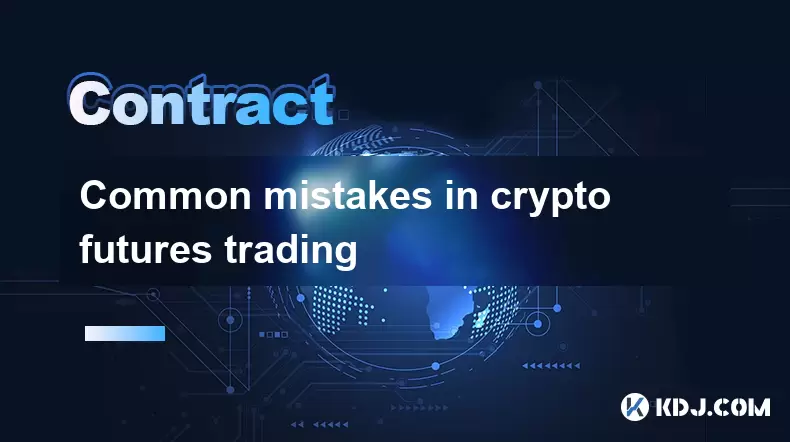
Common mistakes in crypto futures trading
Jul 20,2025 at 09:56pm
Overleveraging Without Risk ManagementOne of the most common mistakes in crypto futures trading is overleveraging. Traders often believe that using hi...

How to understand the liquidation price?
Jul 19,2025 at 10:00pm
What Is a Liquidation Price in Cryptocurrency Trading?In the realm of cryptocurrency futures and margin trading, the liquidation price refers to the s...
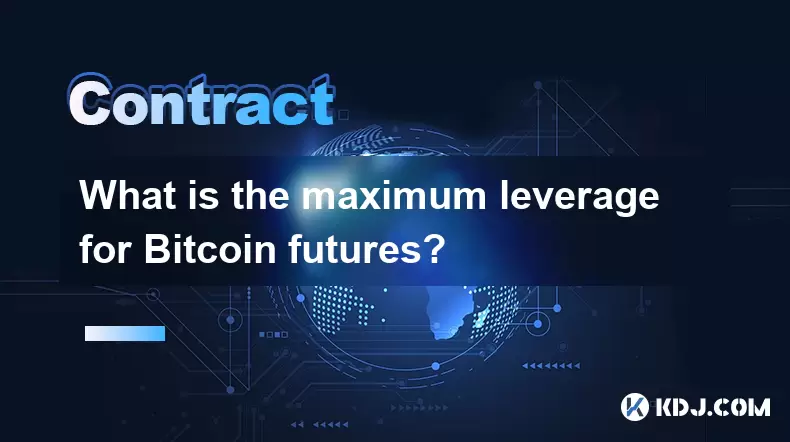
What is the maximum leverage for Bitcoin futures?
Jul 20,2025 at 03:42pm
Understanding Leverage in Bitcoin FuturesLeverage in Bitcoin futures refers to the use of borrowed capital to increase the potential return on investm...
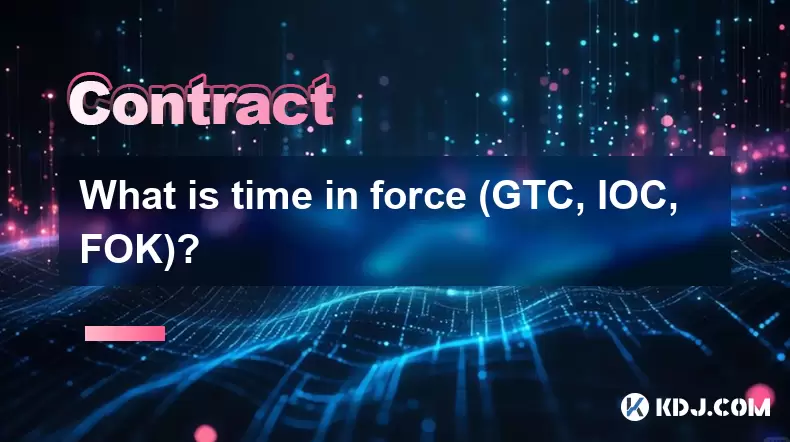
What is time in force (GTC, IOC, FOK)?
Jul 19,2025 at 08:57am
Understanding Time in Force in Cryptocurrency TradingIn the world of cryptocurrency trading, the Time in Force (TIF) is a crucial parameter that deter...

What is a maker vs a taker fee?
Jul 19,2025 at 01:14am
Understanding the Basics of Cryptocurrency Exchange FeesIn the world of cryptocurrency trading, maker vs taker fees are a fundamental concept that eve...

How to analyze Bitcoin futures data from CME?
Jul 19,2025 at 05:22pm
Understanding Bitcoin Futures on CMEBitcoin futures on the CME Group (Chicago Mercantile Exchange) represent a regulated financial instrument that all...

Common mistakes in crypto futures trading
Jul 20,2025 at 09:56pm
Overleveraging Without Risk ManagementOne of the most common mistakes in crypto futures trading is overleveraging. Traders often believe that using hi...

How to understand the liquidation price?
Jul 19,2025 at 10:00pm
What Is a Liquidation Price in Cryptocurrency Trading?In the realm of cryptocurrency futures and margin trading, the liquidation price refers to the s...

What is the maximum leverage for Bitcoin futures?
Jul 20,2025 at 03:42pm
Understanding Leverage in Bitcoin FuturesLeverage in Bitcoin futures refers to the use of borrowed capital to increase the potential return on investm...

What is time in force (GTC, IOC, FOK)?
Jul 19,2025 at 08:57am
Understanding Time in Force in Cryptocurrency TradingIn the world of cryptocurrency trading, the Time in Force (TIF) is a crucial parameter that deter...
See all articles





















